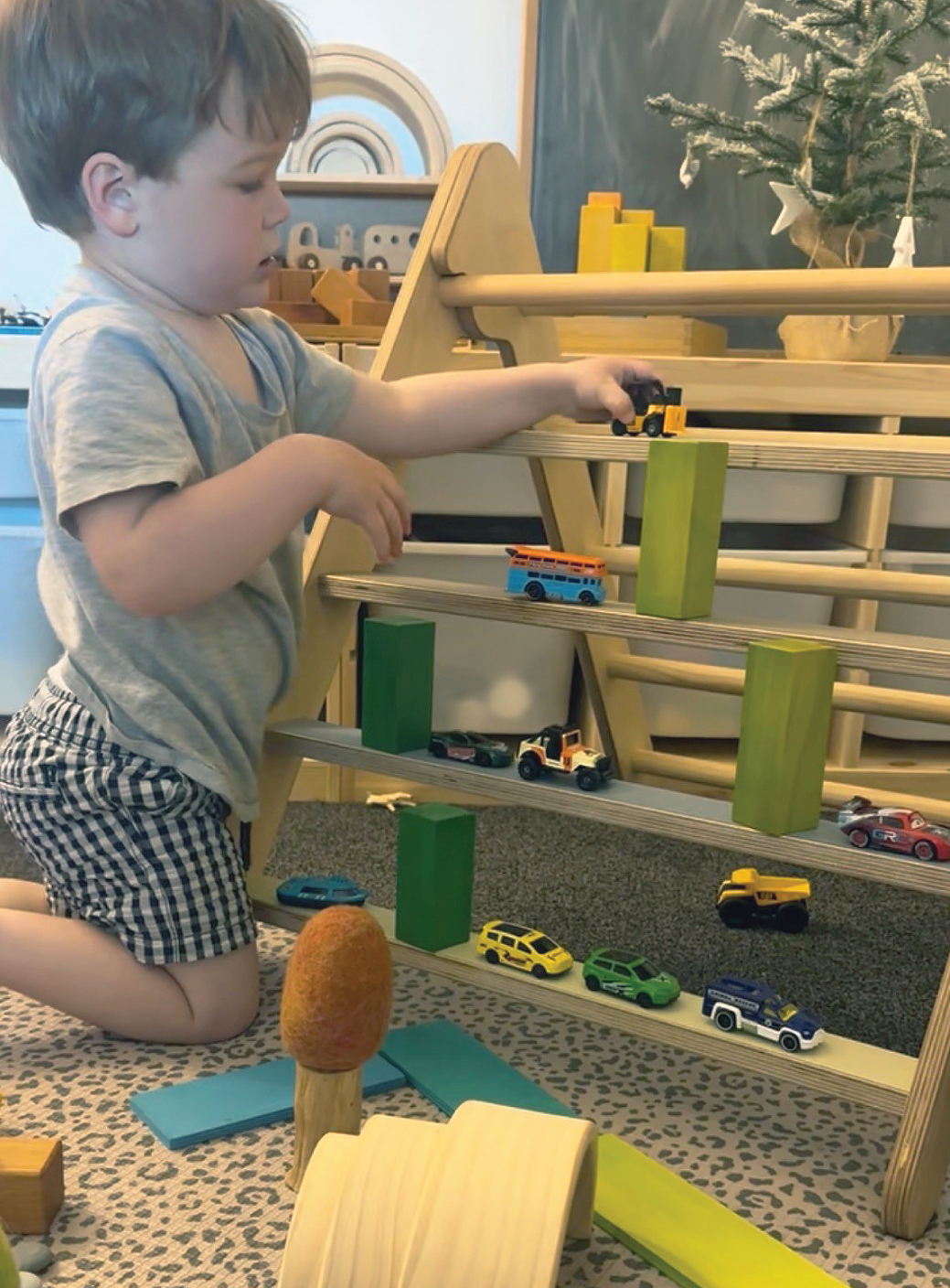Why Pretty Playrooms Miss the Point
Why Pretty Playrooms Miss the Point
It’s Not a Vibe, It’s a Childhood
Rethinking Aesthetic-Driven Parenting
The Problem with Pinterest Parenting
(And What Play Should Actually Look Like)
You know the vibe… white walls, beige linen curtains, a little wooden triangle in the corner with a rainbow draped over it just so. The kind of playroom that looks like it’s been curated by a stylist — and maybe it has. It’s all very calm and tasteful… until your toddler comes in with little hand still covered in this morning’s breakfast.
Let’s talk about it: the rise of Pinterest Parenting — and why real, meaningful play has nothing to do with what looks good in a photo.

Quality Pikler products for climbing… and other adventures
Not Another Toy Trend
Pikler triangles. Montessori shelves. Natural toys and no plastic. If you’ve got a little one, you’ve probably seen them all over your feed. And look — we make Pikler climbing frames, we have one at our place, and we love it. But sometimes I catch myself wondering:
Do I have this because it’s good for my child… or because it fits my aesthetic? Somewhere along the way, parenting has started to feel like content creation. We’re not just raising kids anymore — we’re building brands.
And suddenly, play has become something we curate, not something our kids actually lead.
Real Play Is a Bit Ugly
Here’s the thing: real play is messy. It’s loud. It’s repetitive. It’s your toddler climbing the same ramp 26 times in a row and squealing with pride every time like it’s brand new.
It doesn’t look cute. It’s not always clean. And frequently it’s not photogenic.
But it’s in that kind of play that the magic happens. The confidence-building. The risk-taking. The “watch me!” moments that matter. Not the aesthetic ones.
Montessori ≠ Beige
Let’s clear this up while we’re here: Montessori is not about making your home look like a Scandinavian design studio. It’s about respecting your child as a capable, curious person — and giving them tools to explore the world on their terms.
Dr Montessori (and Dr Emmi Pikler too) weren’t trying to be trendy. They were just trying to help kids move, think, and learn without being constantly directed by adults. That’s it.
So if your kid wants to turn the Pikler into a tunnel, or a slide, or a pretend pirate ship — go for it. That’s actually the point.
It’s Meant to Be Used
That’s something I really love about our Play Systems climbing frame — it’s meant to be used. It’s finished in a natural hard wax oil that marks, deepens, and develops a beautiful patina over time. Polyurethane might look all shiny and easy to wipe, but it’s basically plastic — and it doesn’t age well. It can crack, peel, and just ends up looking a bit sad. Our climbing frames are finished with a natural hard wax oil that soaks into the wood and shows the love. Every scratch, scuff, and mark tells a story — of climbing, exploring, laughing. It’s not meant to stay perfect. It’s meant to be played with. Basically, it ages like your favourite pair of leather boots. Scratches, scuffs, dents — they’re not flaws, they’re stories. Little reminders of who climbed it, jumped off it, hung upside down from it (or tried to).
And honestly? I’d rather have a scratched-up climbing frame full of memories than a perfect one sitting in the corner looking pretty but untouched.
So What Should Play Look Like?
It should look like your kid in full chaos mode. It should look like risk, repetition, discovery. It should look like the living room being taken over by an elaborate obstacle course they invented themselves. It should look like them leading the way — not us designing the perfect environment and hoping they play “properly.”
Because when play is real, it’s not perfect.
And that’s kind of the whole point.
Want to know more about our climbing frames?
Check out why parents love our Pikler-inspired climbing frame.

